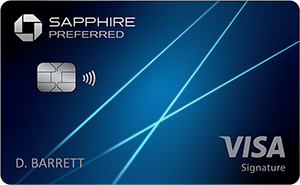We’ve introduced a lot of the travel rewards theory and now it’s time to get into the fun stuff: the credit cards that make this all possible. This is an essential lesson, so please read this closely:
Three Types of Travel Rewards Credit Cards
Today we’ll describe the three main types of travel rewards credit cards,
- Fixed value
- Co-branded
- Flexible/Transferable
and how you can benefit from each.
1. Fixed Value Travel Rewards Cards
 The first category of travel rewards credit cards is what we call “fixed value” cards. These cards offer a fixed-value point system (usually 1 cent per point in value, so 50,000 points = $500 for instance) so you know exactly what your points are worth from the outset.
The first category of travel rewards credit cards is what we call “fixed value” cards. These cards offer a fixed-value point system (usually 1 cent per point in value, so 50,000 points = $500 for instance) so you know exactly what your points are worth from the outset.
These are the easiest of all travel rewards cards to use and they provide you the most flexibility because you simply use that credit card to actually pay for your travel expense and after the fact you log into your account and redeem your points to effectively ‘erase’ that charge (or whatever portion you have enough points to offset).
It’s that simple.
What you gain in flexibility though, you lose in potential upside value – so there’s clearly a tradeoff here.
These cards are incredibly useful additions to a travel rewards strategy for three main reasons:
- The cards can be used for a range of travel expenses including: hotels, airlines, rental cars, cruises, trains, tour agencies and tour operators, etc.
- They are the easiest of all the “miles” to use since you are just using this credit card to pay for your regular travel expense. So you don’t have to deal with award availability or any limitations — just book the travel and pay for it with this card.
- You do not have to actually have the points in your account when you make the purchase. If you have a last-minute travel expense and you don’t have other points or miles, you could quickly open one of these cards, pay for the expense with that card and then proceed to hit the minimum spending requirement and go back and apply the points retroactively against that expense to “erase” it.
The main examples of these fixed value credit cards are:
- Capital One Venture Rewards Credit Card (Update: this card now offers transfer options, but we still highlight it for its ‘fixed value’ nature)
- Capital One Spark Miles for Business
- Wells Fargo® Propel®
Important points to remember with these fixed-value cards:
- The points you earn reside in your credit card account. For example, you cannot transfer miles earned to an airline or hotel loyalty program; they must be redeemed through the card’s loyalty program itself. If you close your credit card and still have any of these points remaining, you would lose them. You must redeem them before closing an account. This is essential, because they are the only type of points you could lose if you didn’t utilize them in the first 12 months (more on this later).
- Points can be redeemed for travel expenses, but you do this after-the-fact by logging into your account and offsetting the expense with the points in your account. Depending on the bank, you have 90-120 days after the fact to log in and retroactively apply your points to get a statement credit.
- Although the points you earn with these cards are often referred to as “miles,” they actually have nothing to do with airline miles at all since they really are these fixed-value points that turn into a statement credit on your credit card bill.
Only in the world of travel rewards would a signup bonus currently worth $500 (or more with the minimum spending!) be looked down upon as fairly meager, but you will see that sentiment with regularity on the big travel blogs.
Don’t be fooled!
These are highly valuable cards for their flexibility and ability to use for non-traditional redemption options like rental cars, Bed & Breakfasts, Disney World park tickets, etc.
2. Co-Branded Airline and Hotel Rewards Cards
Co-branded rewards cards offer points or miles that are branded to one specific airline or hotel program, which is fairly straightforward.
Here are three of the many examples of co-branded cards:
- United MileagePlus Explorer Card
- Gold Delta Skymiles® Credit Card from American Express
- World of Hyatt Credit Card
The points you earn from your credit card are automatically sent at the end of each credit card statement to your airline or hotel rewards account and they are then true miles/points in that account. From that moment on, they are no longer related to your credit card at all, so if you closed your credit card at some point in the future and still had some of those miles remaining in your rewards account, you would not lose them.
Once in your airline/hotel rewards account the points become subject to the expiration policies of the respective airline/hotel, so you do need to be aware of that, but you would not lose them for closing the credit card where you earned them.
It is pretty easy to keep your points from expiring in general as any account activity whatsoever ‘resets the clock’ on the expiration for your entire balance of points with that airline/hotel.
A quick tip would be to make one small purchase on your co-branded credit card the month before you are set to close it as that one small purchase will reset the expiration clock back to zero for your entire points balance just from that handful of points being deposited into your account!
Co-branded Card Miles:
The miles you earn from your co-branded card are true frequent flyer miles/hotel points and they are subject to the award charts and award availability limitations of the respective airline/hotel.
You can potentially get much more value from these points as compared with the fixed-value credit cards as shown in the following examples (we’ll compare 40,000 miles to the $400 statement credit you’d earn from 40,000 miles from the fixed value card like Venture):
- 45,000 American Airlines miles will earn you one round-trip flight from the US to Europe during their ‘off-peak’ time period. This could be worth well over $1,000.
- You could use 37,500 British Airways (BA) Avios points to earn five one-way flights of shorter than 1,150 miles in actual distance on American Airlines or Alaska Airlines here in the US. The BA distance-based award chart is one of the true ‘sweet spots’ in all of travel rewards!
These are just two of many examples where you can earn significant value from traditional frequent flyer miles.
The upside of frequent flyer miles is that you can find award redemptions that allow you to travel the world just using these points, but the downside is clearly the lack of “Saver level” award availability and that you’re locking yourself into just this one airline.
If you are flexible with your frequent flyer miles, you can save many thousands of dollars and can see the world for a small amount of money, so it is really crucial.
3. Flexible/Transferable Points Credit Cards
 We consider the transferable point programs the most valuable of all the travel rewards credit cards.
We consider the transferable point programs the most valuable of all the travel rewards credit cards.
The reason is the flexibility we have spoken about at length thus far in the course:
These points have built-in flexibility because among their multiple redemption options, the most attractive is that they can transfer to multiple airline and hotel partners.
The two major transferable programs are:
- Chase Ultimate Rewards
- American Express Membership Rewards
The other two transferable programs are:
- Capital One Venture miles
- Citi ThankYou Points
The Chase, Amex and Citi transferable points reside in your credit card account and you transfer them (important!) to your airline or hotel reward account only when you are ready to book an award flight. This gives you built-in flexibility as, for instance, Chase has 13 different airline and hotel partners and the points transfer instantly.
Let’s say you had an accumulated balance of Chase Ultimate Rewards (UR) points and you wanted to fly in the United States: You could potentially transfer them to United or Southwest for their award flights or to British Airways for flights on American Airlines and Alaska Airlines (much more on using British Airways miles in the US later in this course). So just by having Chase UR points, you have the flexibility of flying nearly every major US airline!
You could also put together a cohesive trip just from Chase UR points as you can book Hyatt hotels with these points as well. We have found Hyatt’s award chart to be one of the most reasonable of all the major hotel chains.
Instead of transferring the Chase UR points to partner airlines/hotels, they also give you the option to redeem them for cash back (at 1 cent per point) or for travel redemptions through their Chase Travel(SM) portal (at 1.25 cents per point); while these aren’t the greatest redemption options, they give you more flexibility.
You can’t go wrong with these!
As you can see, it is hard to go wrong with transferable points such as Chase UR, Amex Membership Rewards, Citi ThankYou and Capital One Venture miles and that is why nearly all travel rewards strategies would lean heavily towards accumulating significant balances of these points.
Just keep in mind that these points reside in your credit card account, so if you ever close your card and still have points remaining, you will lose them. The simple way to avoid that is to just transfer them out before you close your credit card account, or if you have another card in that transferable points program, you can combine them together under the card you are leaving open.
